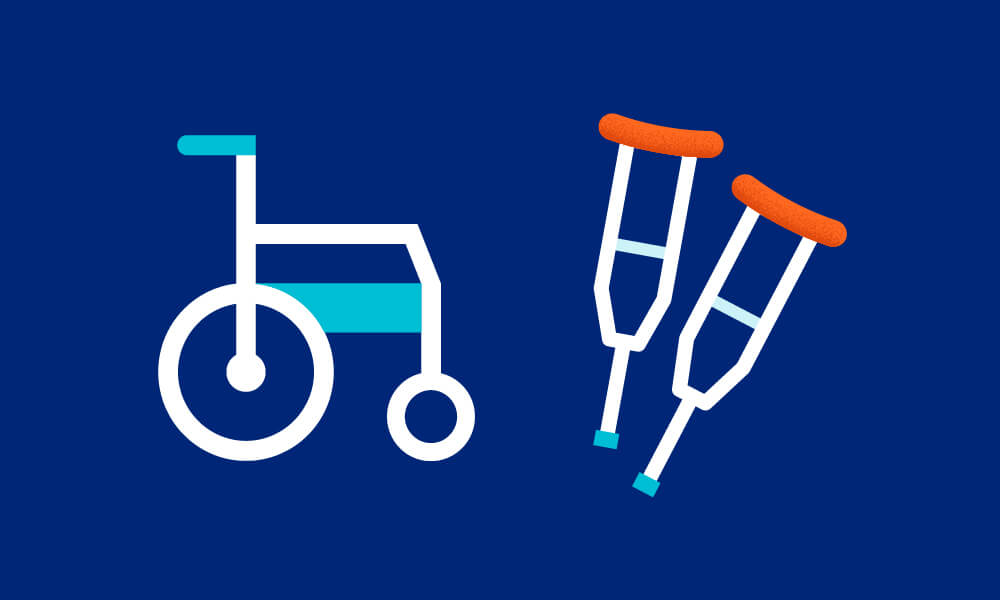

Medicare defines durable medical equipment, or DME, as reusable medical equipment that has been deemed medically necessary. Your doctor or another health care provider determines what equipment you need per Medicare guidelines. He or she assesses your health condition, what equipment can be used in your home and what equipment you are able to use. Medicare Part B will cover medically necessary durable medical equipment if you meet the coverage requirements.
*Note: If you live in a long-term care facility, then that’s considered your home by Medicare. However, if you are in a skilled nursing facility, then that facility is responsible for any DME it provides you.
Some examples of DME are walkers, hospital beds, home oxygen equipment, diabetes self-testing equipment (and supplies), and certain nebulizers and their medications (non-disposable). Wheelchairs and power scooters are also included in the list of DME, but additional rules apply. (See below.)
Generally speaking, Medicare pays for only one piece of DME for a particular health condition at any one time. Also, Medicare usually only pays for the most basic form of the equipment that’s needed.
While the list below is not complete, and other items may be covered, the below are some examples of common durable medical equipment items often covered by Medicare Part B.
Some examples of durable medical equipment covered by Medicare:
This is not a complete list, and some equipment items are subject to specific conditions for coverage. To see more, click here.
Medicare does also cover certain prescriptions, medications and supplies that you may use with your durable medical equipment item.
If you are uncertain whether you may be covered by Part B for an item on this list, it’s best to reach out to your plan provider. If you don’t see an item you need on this list, talk with your doctor or health care provider to see if it’s considered medically necessary and then with your plan provider to see if you’ll qualify for Medicare to cover it. Medicaid may offer coverage for some things Medicare may not, so keep that in mind if you have Medicaid as well.
There are some kinds of durable medical equipment and supplies that Medicare will not cover.
Medicare may help pay for your manual wheelchair if all of the following conditions are met:
Medicare will only help pay for a scooter or power wheelchair for you if:
In most cases, Medicare does not cover disposable medical supplies that are used once and then thrown away. However, some can be covered, such as supplies like test strips for diabetes. You’ll want to check with Medicare or your Medicare plan provider directly to see if the item you need is covered. Sometimes it may be that Part D provides coverage. For example, some diabetes supplies are also covered under Part D.
*Note: If you qualify for Medicare home health, Medicare may cover certain disposable supplies, such as intravenous supplies, gauze or catheters.
Original Medicare’s Part B covers durable medical equipment items when your Medicare-enrolled doctor or health care provider prescribes it for you to use at home. Once you have the doctor’s prescription, you can take it to any Medicare-enrolled supplier. Medicare pays 80 percent of its approved amount (after you meet your Part B deductible), and then you pay the 20 percent balance.
If your health condition changes and you need a different type of equipment, then you usually need a new prescription from your doctor for it to be covered.
Medicare Advantage (Part C) plans are required to cover everything that Original Medicare covers. This is true for both durable medical equipment and other benefits covered by the plan. The main difference between Original Medicare and Medicare Advantage lies in how you get a durable medical equipment item covered. For example, a Medicare Advantage plan may require prior authorization in order for items to be covered. You may also need to use a doctor and a Medicare-approved supplier who is in the plan’s network.